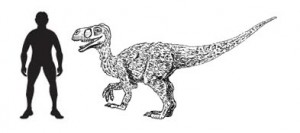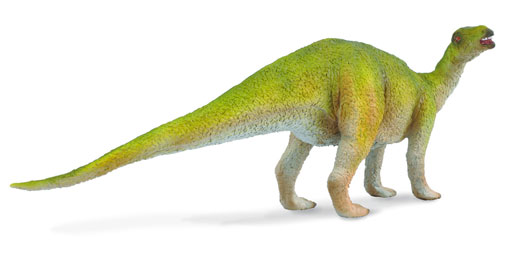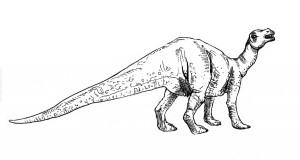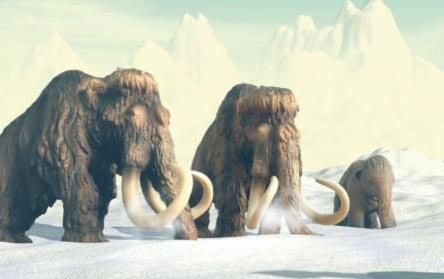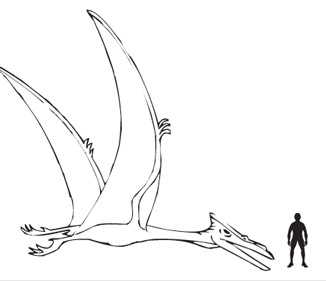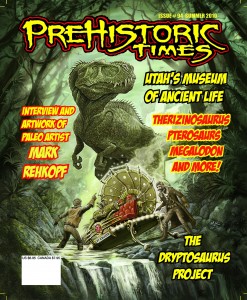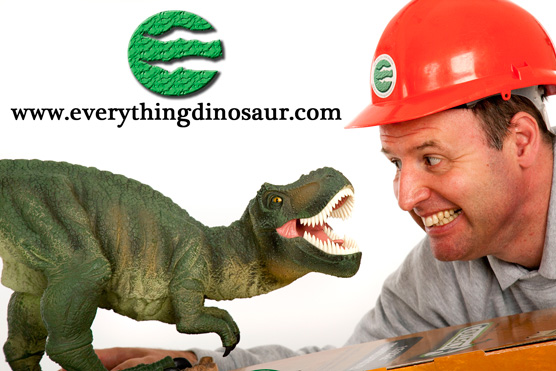Ceratopsian Bonebed in Northern Alberta – The World’s Biggest Dinosaur Graveyard
An extensive ceratopsian bonebed is explored by scientists.
The Canadian province of Alberta is renowned for its superb Late Cretaceous vertebrate fossils, however scientists from the Royal Tyrrell Museum (Drumheller, Alberta), are about to publish a paper on what has been described as the greatest concentration of dinosaur fossils (a ceratopsian bonebed) found to date anywhere in the world.
Ceratopsian Bonebed
This discovery may help palaeontologists to unlock the secret of why Alberta has proved to be such a good place to find dinosaur fossils. Everything Dinosaur team members have been lucky enough to have been involved in a number of fossil digs in Alberta, mainly working on ornithischian dinosaurs such as ceratopsians (horned dinosaurs) and hadrosaurine, hadrosaurs (duck-billed dinosaurs).
The bone-bed covers some 2.3 square kilometres and is believed to contain the jumbled up and dis-articulated remains of many thousands of individual dinosaurs. The dinosaur graveyard that this bonebed represents is that of a Centrosaurus (horned dinosaur). A bonebed refers to a layer of strata that is saturated with fossils, usually the result of a single, catastrophic event that enveloped an entire herd or group of dinosaurs, normally over a very short period. We speculate that the dinosaur remains found in this huge bonebed are that of Centrosaurus apertus, as this dinosaur is arguably the best known from areas such as the Dinosaur Provincial Park. Enormous numbers of fossils of this particular herbivorous dinosaur are known from eastern Saskatchewan as well as individual and exceptional fossil finds such as a single, beautifully preserved skull found in the Oldman Formation of southern Alberta. The fossil evidence gives this 6-metre-long dinosaur a geographic range of at least 40,000 kilometres, meaning that this dinosaur roamed over an area at least twice the size of Wales.
A Replica of a Centrosaurus (PNSO Model)
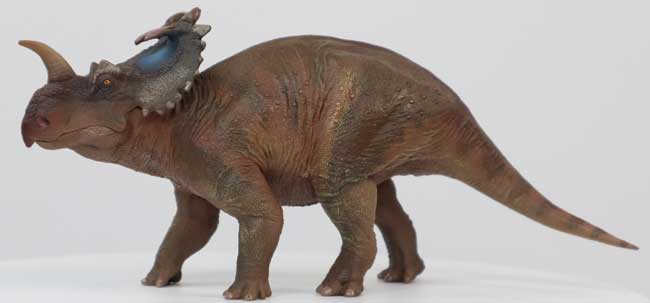
PNSO Jennie the Centrosaurus (lateral view). Picture credit: Everything Dinosaur.
Picture credit: Everything Dinosaur
To view the PNSO range of prehistoric animal figures: PNSO Age of Dinosaurs.
Centrosaurus Horned Dinosaurs
The most spectacular and numerous fossils of Centrosaurus spp. have been found in bonebeds along the South Saskatchewan river, near Hilda (Alberta). It seems that this 2.3 kilometre square location is the biggest found to date in that area. What makes it so special is the sheer size and scale of the discovery. A report on the site, due to be published shortly will provide supporting evidence to indicate that this is the biggest concentration of dinosaur fossils found to date.
It would have to substantial, as there are numerous contenders around for the biggest dinosaur graveyard known to science. For example, the Swiss have a claim on this title, with their extensive plateosaur bonebeds.
To read an article on the Swiss discovery: Huge Plateosaurus Bone-bed Unearthed in Switzerland.
David Eberth, a senior researcher with the Royal Tyrrell Museum of Palaeontology commented that the site was “really ugly looking”, the bonebed is exposed in outcrops along the South Saskatchewan river.
This particular bonebed was actually discovered over ten years ago, however, an official report on the discovery is going to be published later this month. Scientists are hopeful that this location will shed some light on why Alberta has been blessed with a bountiful supply of dinosaur fossils.
David Eberth stated:
“We’ve always been puzzled by that. We’ve always enjoyed it, but it’s always been a puzzle. This discovery is helping us understand why that is.”
This bonebed preserves the remains of thousands of individual centrosaurs that died simultaneously, it has helped researchers to develop a working theory why Alberta is such a “hot spot” for dinosaur fossils. In the Campanian faunal stage of the Late Cretaceous (approximately 76-74 million years ago), Alberta was a lush tropical coastal area and the Hilda bonebed provides evidence that this region was occasionally subjected to violent and catastrophic tropical storms that led to the drowning of many thousands of large animals. Centrosaurus herds would have been caught up in these storms and drowned in the subsequent flooding.
Centrosaurus was a short-frilled ceratopsian with a single large nose horn. It was named and described by the eminent Canadian palaeontologist Lawrence Lambe in 1904. The name means “pointed lizard” a reference to its single large horn, in contrast to the larger and much more famous three-horned distant relative Triceratops.
A Comparison of Triceratops and Centrosaurus
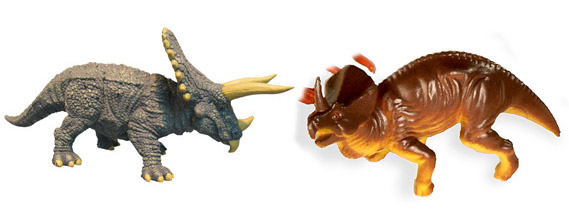
Picture credit: Everything Dinosaur
The picture shows the single horned Centrosaurus on the right with a Triceratops on the left. Triceratops (T. horridus) was actually larger than C. apertus with some estimates for Triceratops spp. at over 9 metres in length.
To view articulated horned dinosaur models: Beasts of the Mesozoic Models and Figures.
Geological analysis of the bonebed sediments suggest that when the tropical storms hit the relatively low lying coastal area of what was to become Alberta, sea levels would rise by 4-5 metres and extensive flooding would result. As the flood waters rose and continued their movement inland, the slow-witted horned dinosaurs would have probably have been unaware of the danger until it was too late. The flat, featureless landscape would have given them no higher ground to escape to and at over 6 metres long, these heavy animals were hardly built to be able to nip up the nearest tall Araucaria.
David Eberth, imagined a scene where as the flood waters overtook a herd of ceratosaurs: “they would have trod water for a while, like cattle would do, but they would have tired very quickly and drowned.”
The corpses would have then piled up as the water receded, providing a feast for any crocodiles or theropod dinosaurs that had escaped the flood. Reflecting on the death of so many magnificent creatures, David Eberth, admitted to feeling a little sad, but at least this new bonebed evidence helps explain why Alberta has so many vertebrate fossils.
He went on to comment:
“Alberta just doesn’t seem to be able to stop showing us new dinosaurs and new information about dinosaurs. What this bonebed is telling us is that there’s scats more work that needs to be done here.”
The vice-president of the Alberta Palaeontological Society, Harold Whittaker expressed his excitement about the Hilda bonebed:
“That’s a great find, that’s a huge bonebed. I look forward to going down there and getting a look at it.”


